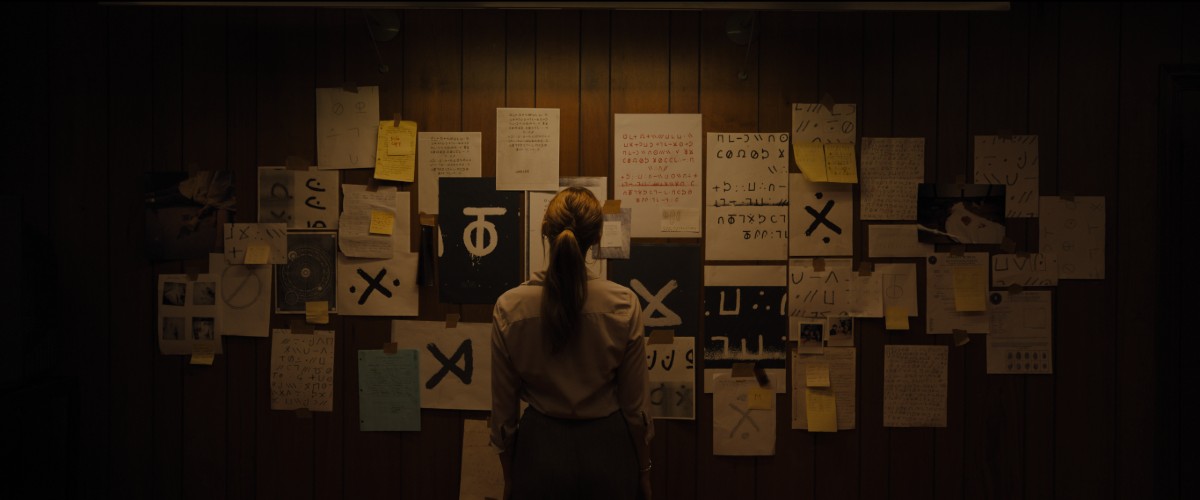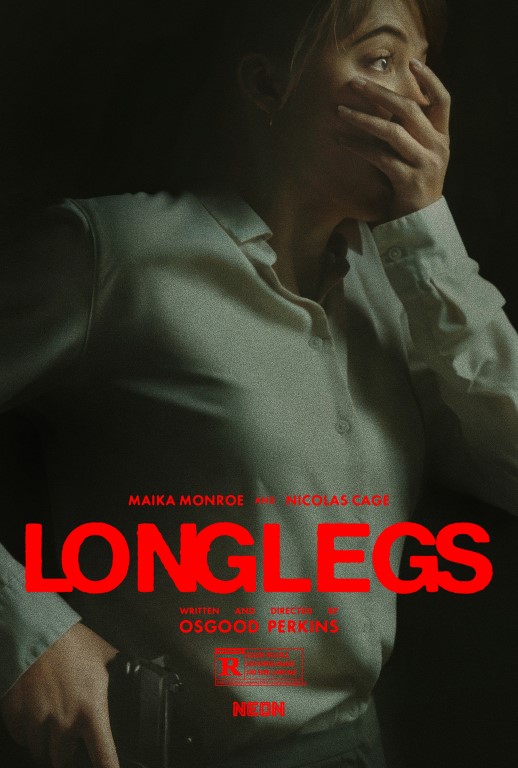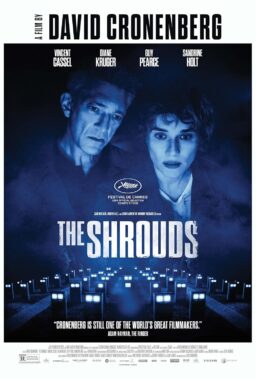Everything about Osgood Perkins’ “Longlegs” is designed to rattle you, unsettle you, and make you think about it hours or even days later. It’s a very purposefully exaggerated film, from the oppressive sound design to the heavily mannered performances, going for something closer to a cinematic nightmare than anything approaching realism. To that end, despite obvious narrative influences, comparisons to Jonathan Demme’s “The Silence of the Lambs” feel a bit off. Sure, there’s a female FBI agent and a serial killer, but Perkins is seeking something different tonally. It’s basically like watching the scene where Clarice hunts around the storage unit in the dark for 100 minutes. There’s little room to breathe.
Perkins sometimes loses his grip on that fever dream tone, such as in a late-film exposition dump that too directly and bizarrely seeks to explain what’s happened for the previous hour and change. Nightmares don’t need exposition dumps. It might sound nitpicky, but it’s indicative of an overall problem that hampers “Longlegs.” Despite the notable pre-release work by Neon to build buzz, and the incredibly low Cinemascore likely coming its way, this strange film sometimes doesn’t seem willing to commit to its creepy weirdness all the way, pulling back or explaining its intentions when it should be seeking confusion as much as explanation. We remember the nightmares we’re still trying to understand more than anything.
“Longlegs” opens with arguably its most effective sequence, a flashback framed like you’re watching someone’s home movie through a family room projector. A car pulls up to a remote home, from which a young girl emerges. Immediately, Perkins is playing with perspective, not only locking us into the tight frame but basically giving us a child’s POV on the encounter that happens next, one that will impact everything that follows.
Cut to years later, sometime in an exaggerated ‘90s – there’s a photo of Clinton on the wall of the FBI Director’s office to set the time, but a lot of the production design feels even older than that era, once again creating a sort of dream-logic disconnect – where new agent Lee Harker (Maika Monroe) arrives for her first case. Acting on a sort of psychic hunch, she captures a serial killer, leading the FBI to suspect she may not be just another ordinary agent, sending her through a series of mental tests to prove she has unique abilities. Sadly, this thread gets lost a little bit as the film goes on, mostly used to set Lee up as “special,” but Perkins’ screenplay does too little with that aspect of her character. It’s one of several places in which “Longlegs” could have leaned even more into its quirks. Sure, this movie is weird for the multiplexes of America, but my argument would be that it should have been weirder.
One person certainly giving it his weird all is Nicolas Cage (and he has more weird in his bag of acting tricks than most), who plays the title character, a Satan-worshipping serial killer who seems sort of inspired by Ted Bundy and Tiny Tim (the singer, not the urchin). Harker is brought in by Agent Carter (Blair Underwood) to investigate a series of family murders, those horrible events we hear about wherein a parent, usually the father, slays the children and spouse before taking their own life. No one would even think these were anything but tragic, self-contained events if there wasn’t a mysterious figure out there sending cryptic, Zodiac-esque notes about the crimes, tied to specific dates on a calendar. How is Longlegs orchestrating such brutality? And what do the dates mean? Alicia Witt plays Ruth, Lee’s ultra-religious mother, who’s always asking her daughter if she’s said her prayers. One senses Lee is going to need those prayers.
Everything in “Longlegs” feels very deliberately crafted and chosen by the undeniably talented writer/director of “The Blackcoat’s Daughter” and “I Am the Pretty Thing That Lives in the House.” From the consistently low camera angles that enhance tension by giving us a reduced POV to the quick bursts of imagery and sound that feel nearly subliminal to possibly even the names of the characters. Without spoiling anything, Lee has a connection to the very vampiric Longlegs that made me wonder if Harker was a Bram Stoker’s Dracula reference (pretty sure it is). And is it a coincidence that the only survivor’s surname is Camera (played by Kiernan Shipka, in an impressive single-scene performance)? After all, it’s Lee’s camera, and, by extension, Perkins’ camera that keeps the story alive.
This kind of mental unpacking of a film can be fun and will almost certainly lead to hours of TikToks and YouTube videos drawing connections like the paragraph above. But it’s hard for a film to be calibrated this carefully and feel as unhinged as this story should at the same time. There’s a version of “Longlegs” that hides its strings better, one that doesn’t feel the need to explain everything away with an insanely long exposition-dump monologue. “Longlegs” has one that is so misguided, not only because nightmares are better with a few lingering questions, but because the scenes that follow basically serve the same purpose through plotting. This is a movie with a haunted doll, psychic FBI agent, and a serial killer with a connection to Satan. We don’t need to connect all the dots.
And yet, Perkins is simply too talented when it comes to framing, mood, and tension to completely dismiss “Longlegs.” The film will likely draw horror fans through its unapologetic brutality – the murders here are bloody and often crunchy – but there are also some themes worth unpacking about how much can be hidden by faith, marred by evil, and even the roles our own parents play in shaping those narratives. (A fascinating read of the film comes when one considers how much Osgood’s father Anthony Perkins hid from his family and the fact that his mother died on 9/11 given how much the film is about generational trauma.) Absolutely no one is phoning in “Longlegs,” and that commitment to craft and mood has an impact. It may be disappointing that it doesn’t land with the same force promised by the viral marketing, but nightmares are unpredictable like that.




















